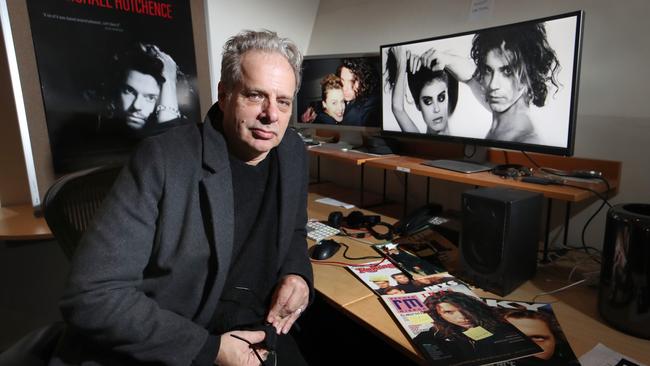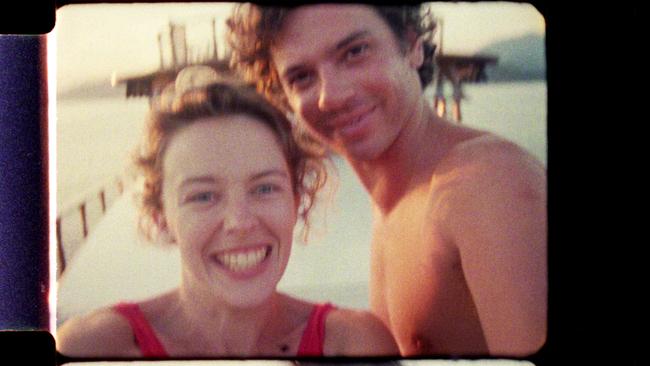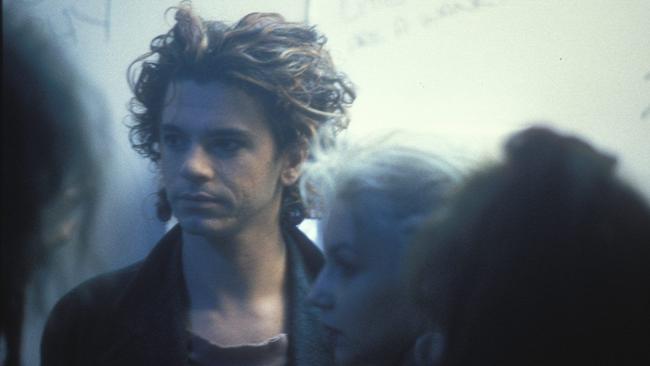Keep me alive
Director Richard Lowenstein went back in time for his documentary about the rise and fall of Michael Hutchence.

Richard Lowenstein
On this film there were three editors, but there’s also the main three of us at the company Ghost Pictures: Lynn-Maree Milburn, Andrew de Groot and me. I call us the three co-directors, and we have been working on the INXS videos from very early on in their career, and the very start of our career, going back to [1984 single] Burn for You. We work in a very organic and communal way where we all do edits and sequences, and we sat and talked every few nights to have a look at what we were doing.
It’s like a jigsaw puzzle; there’s always a way the film will work. We’re experienced enough to not be too nervous; it’s possibly more nerve-racking for our investors and producers than it is for us.
Making [the documentary] was very time-consuming, because normally a film is budgeted on three to six months of editing. Three months is normal, six months is extreme, and then we suddenly go, “We’ve got three editors so we need three editing machines and we need 18 months, because that’s how we work.” But then you find out things like the Amy [Winehouse] film took two years to edit. For documentaries, it’s not that abnormal, but we certainly didn’t expect to take this long, I’ve got to say.

I think the first interview we shot was in 2010, when U2 were in Melbourne with their last tour. And then the [INXS] band interviews were shot when they were last playing with their Irish lead singer [Ciaran Gribbin], and that’s a few years ago now [in 2011]. We started off filming them with talking heads, then, as rough edits came together, I decided, “I don’t want talking heads, I just want audio.” So then it became a whole lot easier to just take people into a dark recording studio and start recording audio, because I really wanted the archives and the real Michael’s arc — at the real time it all happened — to be the star of the thing.

I think enough time has passed to make it easier to get to a portrait of the real person we knew. I think one of the things that motivated all of us to make the film was that nothing we could look at since the point he died [in 1997] — dramas, documentaries, anything — reminded us of the person we knew. Without getting critical towards any of it, you look at it and — even a documentary with his image — you go, “Nup, that’s nothing like the person we knew.”
We all thought, well, if no one else wants to put down a record of who this guy actually was — and not just defined by the songs he wrote or his music — then we should be doing it. We have the experience. It’s very hard for a stranger who didn’t know Michael to come in, look at a whole lot of archive [footage] and say, “Yeah, he was this person.” But being his friend, and having quite close relationships with his partners and his personal managers and the band, you had very many facets going on. You knew that he was a chameleon and a multifaceted creature.
The relationships the three of us had with Michael were very different, and then we brought in a young editor named Tayler [Martin], who came in with a perspective of not knowing a thing about him. I think that was crucial; you get this combination of objectivity and intimacy at the same time. That’s definitely the kind of film I wanted; I didn’t want a love-fest or hagiography — “Wasn’t he a wonderful guy with no fallibilities?” We wanted to show warts and all, and also give some of the warts a little bit of context and understanding.
There were a lot of horror stories about Michael in the last couple of years of his life, and it was easy to go, “Loose rock star being like Motley Crue, angrily kicking something …” But, to be honest, the context is that he was suffering from a traumatic brain injury. Cut him some slack and don’t just give him a cliched legacy. And it’s really only the people who knew him that knew how to do that, and who had access to these people who’d never talked before. I don’t think the average journalist, no matter what their reputation, would have got [Michael’s former girlfriend] Helena Christensen or [another former girlfriend] Michele Bennett or [former manager] Martha Troup — or Kylie [Minogue], even — to sit down and speak so intimately and so privately.
Kylie has spoken about him before, but you compare what she said to 60 Minutes and to us. She’s an expert at being different things to different people; she’s aware that that was mainstream TV, and she’s aware that I wasn’t really interested in whether she had sex on a plane with Michael or not. That’s been chronicled, and maybe it’s true, maybe it’s not. Michael never let truth get in the way of a good story; in one version of the story, it was Bob Hawke; the next, it was Gough Whitlam. Those kind of war stories we weren’t all that interested in.
I’d sit down in a very dark room with a lot of people, almost like a therapist, and say, “Tell us what he meant to you” or “Tell us how you met”. You take people into this world of memory and going back in time, and a lot of the time there were a lot of tears in the dark in these audio studios. I mean, documentary filmmakers love that, especially when the cameras are rolling: there’s your interviewee crying. But I felt that was an infringement of privacy.
I would find it incredibly exhausting, and so would they — but sometimes people spoke about things that they’d never spoken about. They felt a sense of relief, like they’d confessed or been to therapy or something. Sixty times, with 60 people, I went through meeting Michael, him growing up, and then dying. In the three hours I’d talk to them, I’d take them on this emotional journey — much like the film, where we try to take the viewer back in time.
Mystify: Michael Hutchence, national release from Thursday.




To join the conversation, please log in. Don't have an account? Register
Join the conversation, you are commenting as Logout